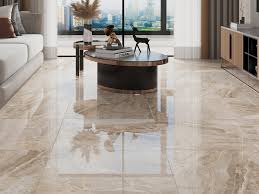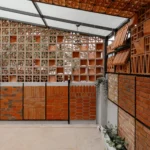Tile Prices Explained: What Affects the Cost
Tiles are the building stone of all the beautiful homes we build in our dreams. They have encapsulated the right dreams and will have you feeling all home. Tiles are the way to make your home look cool and your walls waterproof. And all that affects the strength, durability, and comfort. In the blog Tile Prices Explained: What Affects the Cost? We explain exactly that. A way to have a beautiful and long-lasting house.
With so many options available in terms of material, size, finish, and brand, understanding what affects tile costs can help you make smarter choices. From the type of material and tile thickness to the intricacies of installation and labor, each factor plays a role in determining the final price. This guide breaks down the key elements that influence tile pricing, helping you plan your budget without compromising on quality or aesthetics. For more such information, please visit Bharat Bricks
Understanding Tile Pricing
When planning a renovation or new construction, tiles are one of the most visible and important elements of a space, but their prices can vary widely. Understanding tile pricing helps homeowners and designers make informed decisions without overspending. Several factors influence the cost of tiles, like
- Ceramic and porcelain tiles are popular and affordable, while natural stones like marble, granite, or travertine tend to be pricier due to their rarity and durability.
- Tile size and thickness also impact the price; larger or thicker tiles generally cost more and may require additional labor for proper installation.
- The design and finish play a significant role as well. Intricate patterns, textures, or specialty finishes like polished or glazed surfaces often increase costs.
- Additionally, the brand and quality of tiles affect pricing; well-known brands usually offer better consistency, warranties, and long-term performance.
- Finally, installation and labor costs can make up a substantial portion of the budget. Complex layouts, surface preparation, or uneven flooring may require skilled professionals, which adds to the expense.
Key Factors That Affect Tile Prices
All the Different Factors that affect Tile prices are listed below to help you get a good view of what all can affect the tile you get into your house without making it everybody’s problem.
Material Type
The material of a tile, such as ceramic, porcelain, natural stone, or glass, greatly influences its durability, appearance, and cost. Different materials suit different areas of your home, with some being more water-resistant and others better for heavy traffic.
Tile Size and Thickness
Tiles come in various sizes and thicknesses, affecting both aesthetics and functionality. Larger tiles create a more seamless look, while thicker tiles offer better durability. Choosing the right size and thickness ensures a balanced appearance and long-lasting performance.
Design and Finish
The design, pattern, and finish of a tile define the overall style of a space. Glossy finishes add shine, matte finishes offer subtle elegance, and textured tiles provide slip resistance and visual interest.
Brand and Quality
Reputable brands often guarantee consistent quality, durability, and warranty support. Investing in high-quality tiles ensures longevity, maintains appearance over time, and reduces maintenance costs.
Installation and Labor Costs
The complexity of installation affects overall expenses. Factors include surface preparation, tile type, and labor charges. Professional installation ensures proper alignment, longevity, and prevents future issues like cracks or uneven surfaces.
Average Tile Price Range in India
Below are all the prices of tiles available in India. Have a look at and look for tiles online or in person for the experience you want from your tile distributor. :-
| Tiles | Maximum Price | Minimum Price |
| Marble Tiles | Rs. 35 per sq. feet | Rs. 288 per sq. feet |
| Wooden Tiles | Rs. 61 per sq. feet | Rs. 151 per sq. feet |
| Vitrified Tiles | Rs. 62 per sq. feet | Rs. 392 per sq. feet |
| Ceramic Tiles | Rs. 35 per sq. feet | Rs. 126 per sq. feet |
| Anti Skid Tiles | Rs. 51 per sq. feet | Rs. 107 per sq. feet |
| Wall Tiles | Rs. 35 per sq. feet | Rs. 392 per sq. feet |
| Bathroom Tiles | Rs. 35 per sq. feet | Rs. 368 per sq. feet |
Frequently Asked Questions
What factors influence the price of tiles the most?
Tile prices are mainly affected by material type, size, design, brand, quality, and place of manufacture. Imported or designer tiles usually cost more than standard options.
How does tile size impact the cost?
Larger tiles often cost more per piece, but they can reduce installation time and grout usage, which may balance overall expenses.
Do tile prices include installation and grout materials?
Usually not. Tile prices typically refer to material cost only; installation, adhesive, and grout are charged separately.
How do maintenance requirements affect tile cost over time?
High-quality tiles may cost more upfront but require less maintenance, saving money in the long run.
Are imported tiles worth the higher price?
Imported tiles often offer unique designs, premium finishes, and long-lasting quality, but local alternatives can be equally good if chosen wisely.







